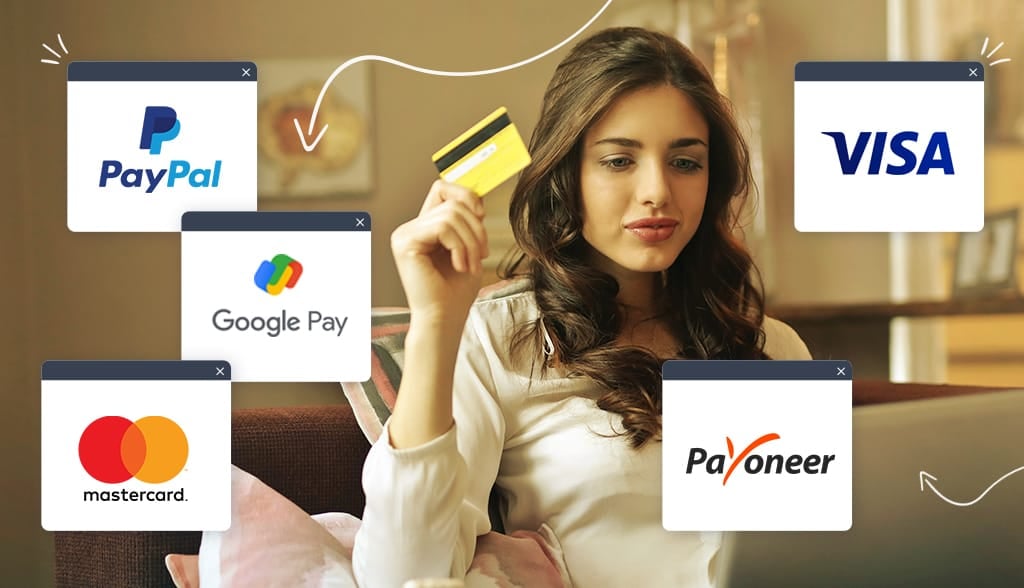
Let’s be honest, sitting in your pajamas and making money is a dream for most of us. Working from home and seeing the money roll into your bank account isn’t what I would call a bad day.
And with the way the world is shaping, it looks like this dream is becoming a reality for many people. Just don’t forget to wash your pajamas—they can start to get crusty…heard that from a friend…not like I would know…
But working online doesn’t come without first building the foundation of your business. And one of those major elements you need to master is the art of getting paid.
Whether you’re starting an online business or are a freelancer, working online requires you to streamline your payment process, making it effortless for both you and your customers.
In this post, I will share with you the different types of online payment options available and how to make sure that you get paid as a business owner.
You already know the one major benefit of accepting online payments—you get paid. Collecting payment from a customer who purchases your product or service is essential (but I don’t need to tell you that).
But online payments can provide your business with more than just the ability to collect payment. Accepting online payments can:
Whether you’re an online shopper or not, the reality is that your customers are. More and more people are purchasing online from the comfort of their homes, and there’s no way that’s going to end any time soon.
As a business owner, ride that wave. Online payments provide you the opportunity to give the customers what they want. And if you give them what they want, they keep coming back for more.
It doesn’t matter if you live in a swanky apartment in the center of New York City or on a farm in Germany. Once you’re online, you don’t need to rely on your local community to do business.
The minute you offer online payments, anyone from around the world can access your products and services. That said, you can increase your target audience and reach more customers.
A new online trend is recurring payments. This means you can charge your customers a monthly fee or provide a subscription service that automatically collects fees every month.
Sure, many people own desktop computers, but let’s be honest, we’re always on our phones. With online payments, customers can make a purchase directly from their phones. And since we’re glued to our phones, this provides an easy way for customers to close a sale.
Now, I’m not going to say there aren’t any downfalls—nothing is perfect. But I will say that after weighing the pros and cons, you’ll quickly realize that the disadvantages aren’t that intense.
There’s no way around it. Whatever payment system you select, there will be fees attached to it. That’s how these companies make their money.
Most payment providers charge a per-transaction fee which usually equates to a small percentage of the total transaction amount. Some providers charge a start-up fee, but not all. I recommend you shop around and decide which provider fits your needs the best.
This is something that both customers and business owners deal with when having an online business. Fraud happens all the time online since businesses cannot verify a customer’s identity.
Two major types of fraud are account takeover and identity theft.
Account takeover is when a customer’s account is hacked into, and unauthorized purchases are made. Identity theft is when an authorized purchase is made with stolen customer information.
However, as an online business, you can take preventative steps to reduce the chances of this happening to your customer. Implementing purchasing limits, requiring tough passwords, and monitoring transactions can help prevent fraudulent activity.
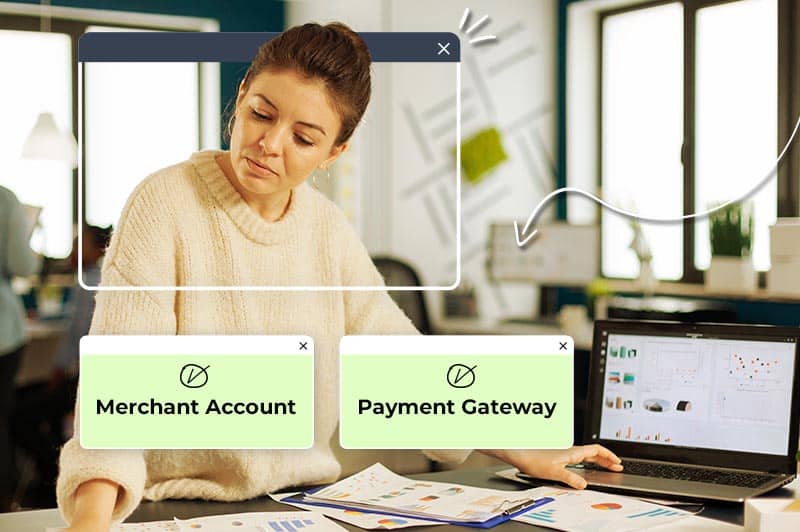
Before we talk about the different ways to get paid online, you need to understand how the process works. I’m not going to get too analytical here, don’t worry. We want to keep things simple. When getting paid, you need two things: a payment gateway and a merchant account.
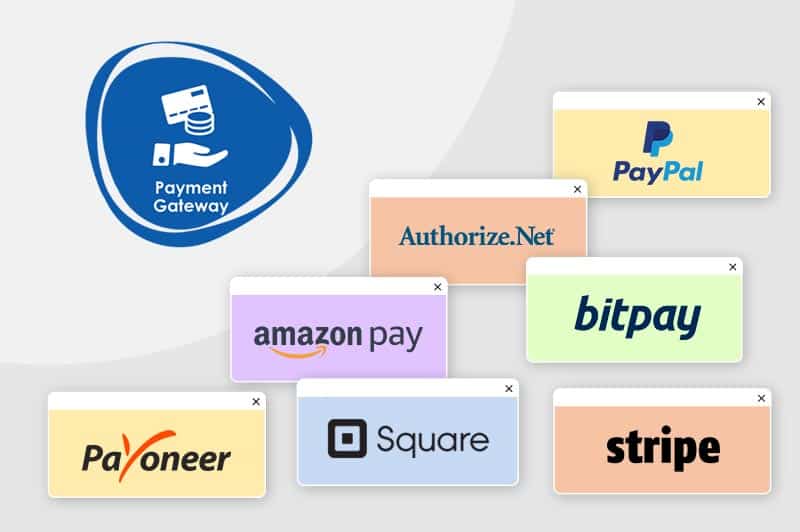
A payment gateway allows you to process the payment. It’s an application used on your website to accept payments. The payment gateway takes the customer’s information and sends it to your bank, where the purchase is approved or denied.
There are tons of payment gateway providers out there, and I’m pretty sure you already know of some (whether you’re aware of it or not).
Most e-commerce platforms like Tailor Brands have payment gateway plugins that easily connect to your site. All you have to do is make an account with that specific payment gateway, provide them with your banking information, and you’re ready for business.
Now, it’s not all a bed of roses. Payment gateways do charge fees, either monthly or per transaction. But that’s simply the cost of doing business.
Some highly-respected and popular payment gateways are:
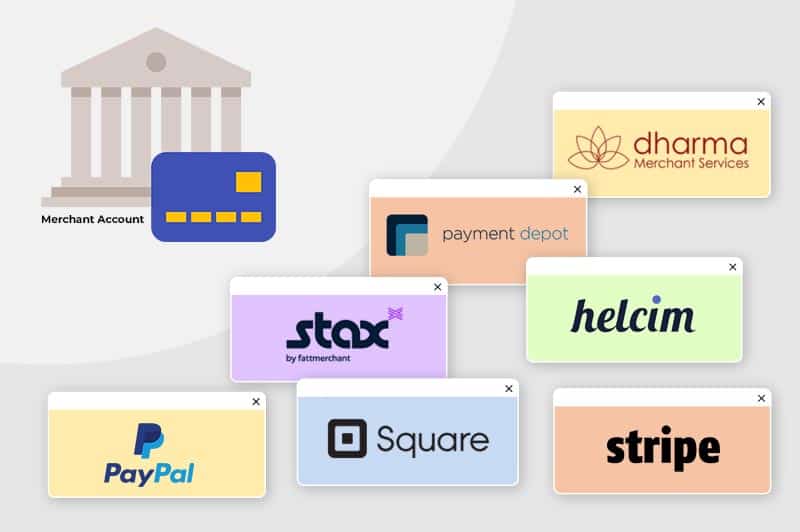
If you’re going to be accepting different types of payments, including credit card payments, you need a merchant account. This account allows you to receive various payments, which then get transferred to your business bank account.
If you’re not going to accept credit or debit cards, then you don’t need a merchant account—a payment gateway is enough.
To open a merchant account, you’ll need your banking information. A merchant service provider does come with fees, usually based on transactions. There are many merchant service providers out there; however, some notable ones are:
You may be wondering, “okay, but why do I see PayPal as a payment gateway and merchant account? Good question! PayPal, Stripe, and Square (to name a few) bundle the two together, making it even easier for businesses to do business. So, for example, PayPal will process payments and also receive payments.
Let’s do a little recap. You know what you need to accept payments and the different providers available. Check!
But before choosing a payment system, you need to know the different ways customers can pay you. That way, you choose a payment system that suits your customer’s needs.
When it comes to making online purchases, credit and debit cards are still the most popular form of payment. I highly recommend you accept all major credit cards, including Visa, and Mastercard.
While credit and debit cards are popular forms of payment, many people use online service providers like PayPal and Stripe to make a purchase.
Most website builders already have PayPal and Stripe integrated into their systems. So all you’ll need to do is create an account, and you’re ready!
More and more people are shopping online from their phones. Mobile wallets like Google Pay, Apple Pay, and Samsung Pay make shopping online extremely convenient and easy for customers.
A user’s credit card information automatically enters itself onto the check-out pay, creating less room for error. Most e-commerce platforms already support mobile payment wallets—in other words, you don’t need to code. It’s already done for you.
ACH (Automated Clearing House) transfer is electronically sending money from the customer’s bank account to the merchant account in the United States. Essentially, an ACH transfer is a direct deposit. Thus, to make an ACH transfer, you don’t need a payment gateway.
The customer only needs your bank account number and your bank’s routing number. Stripe also accepts ACH payments; however, there is a transaction fee. See? I told you the fees are unavoidable.
Invoicing isn’t as tedious as it used to be—what a relief! Many online invoicing platforms offer click-to-pay email invoicing.
What does this mean? Depending on the platform used, the invoice is connected to your payment gateway and paid with one click from their email.
Some invoicing platforms include:
An eCheck is essentially paying by check online. To accept eChecks as payment, you need to provide the customer with a form to fill out their information. I wouldn’t say this is the most common form of payment, but it happens.
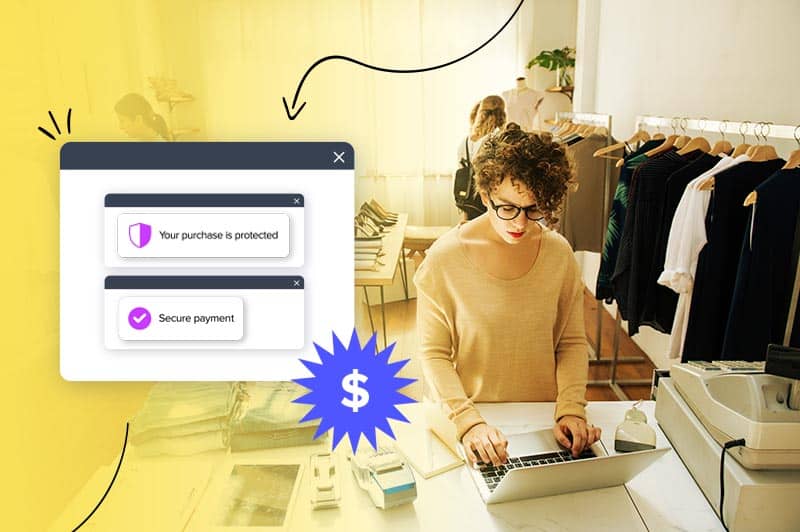
Good question! With all these options, you may be thinking to yourself, “thanks for all this info, what do I do now?” Well, before choosing a payment system, stop for a moment and ask yourself the following questions.
You’ll have a better idea of what your business needs by answering these questions. Don’t worry; you can always change your payment system if it doesn’t suit your needs—it’s not written in stone!
For any business, you need to establish how you’ll receive payment. We hope this article gave you more insight into the options you have and how to choose which payment system is best for your needs.
Ready to create a website for your business? Head to the Tailor Brands studio and start creating!
This portion of our website is for informational or educational purposes only. Tailor Brands is not a law firm, and the information on this website does not constitute legal advice. All statements, opinions, recommendations, and conclusions are solely the expression of the author and provided on an as-is basis. Accordingly, Tailor Brands is not responsible for the information and/or its accuracy or completeness. It also does not indicate any affiliation between Tailor Brands and any other brands, services or logos on this page.
Products
Resources
©2025 Copyright Tailor Brands